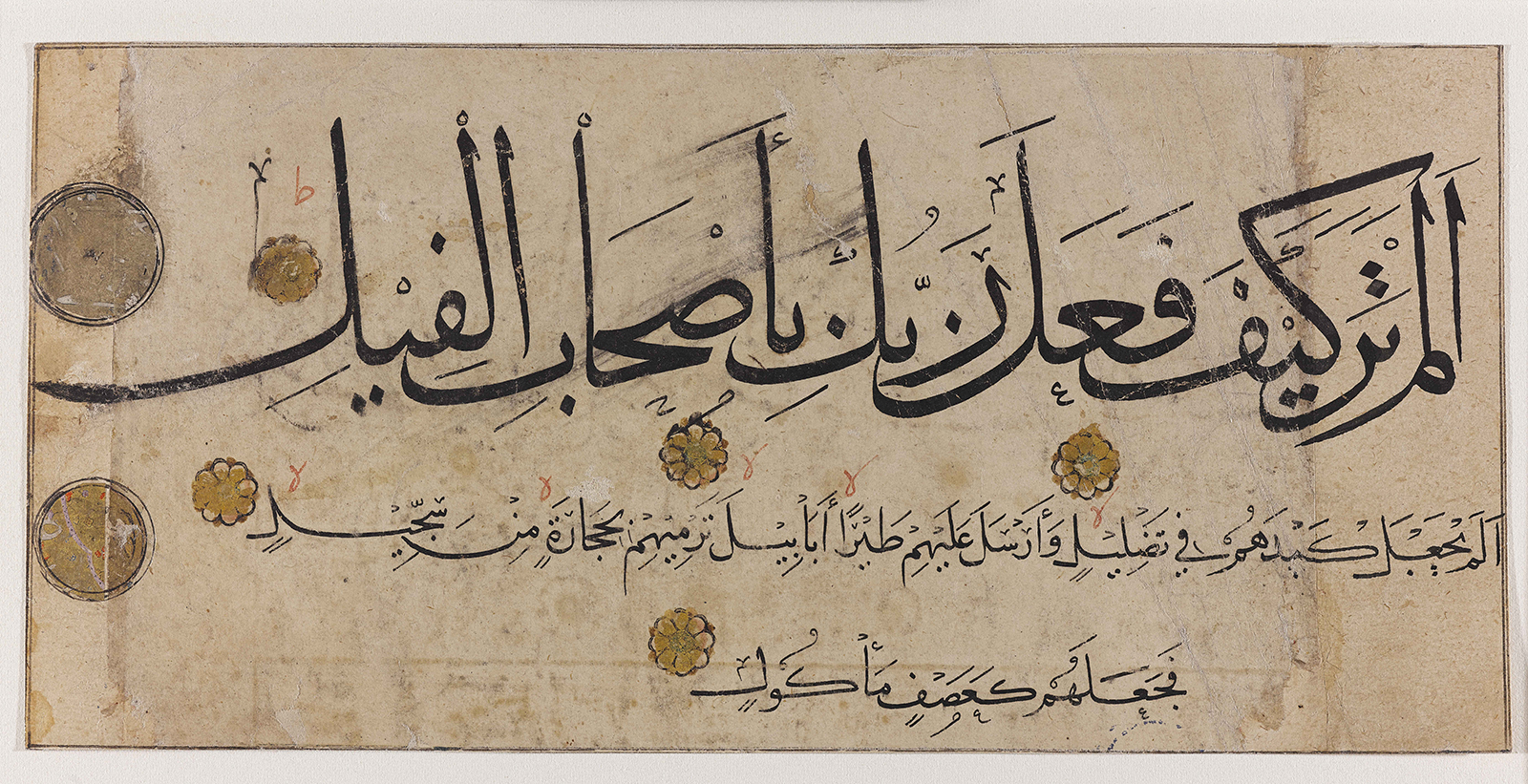Click on the image to zoom
Calligraphic Page
Q105:1-5
- Accession Number:AKM349
- Place:Turkey
- Dimensions:13.1 x 27.5 cm
- Date:17th century
- Materials and Technique:ink and gold on paper
Treatises on calligraphy repeatedly warn the student that the only way to attain perfectly proportioned beautiful writing is by continuously copying and repeating a teacher’s work. This master-to-pupil training process often produced various copies of a single text at different stages of development, several of which are now in major museum collections. This exceptional composition is an example of a calligraphic exercise, but the pupil here must have been quite advanced in his or her training since the text contains a full chapter of the Qur’an (Surat al-Fil, 105:1–5) in two different scripts, as well as all the additional markers that characterize a finished work. While the first line is rendered in a larger-scale angular script with flattened curves known as muhaqqaq, the rest is in the simplest and most commonly used cursive script known as naskh. Typical of other calligraphic exercises under the Ottomans (1299–1923), this writing specimen would not have been meant for public display but rather it would have been collected in a calligrapher’s moraqqa‘ or teaching album.
Note: This online resource is reviewed and updated on an ongoing basis. We are committed to improving this information and will revise and update knowledge about this object as it becomes available.


